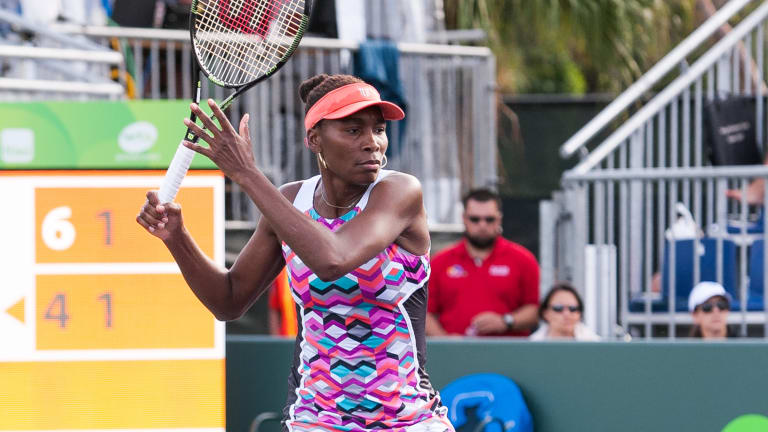High-speed video from the 1997 US Open showed Williams averaging over 2,000 r.p.m. on her forehand, more than Pete Sampras or Andre Agassi and almost double that of her opponent in the final, Martina Hingis. Her forehand technique helped advance the women’s game, and at 37, she’s still using it as a weapon.
1
The core of Williams’ forehand technique is her semi-Western grip. Compared to the majority of her late-’90s contemporaries, Williams rotated her hand a bevel or more farther under the handle.
2
While players like Lindsay Davenport pointed their left arms at the ball, Williams brought her left arm across her body to point at the right sideline. Her radical upper body turn substantially increases her shoulder turn toward the net.
3
Williams also advanced the game with her reliance on semi-open and open stances. She rarely steps across into her forehand, even on short or low balls. Combined with a heavier load on her right leg, her stances increased the amount of coil in her legs and torso, making her forward swing tremendously powerful. She remains ahead of the curve to this day, still rotating her shoulders far throughout the shot, and exploding off the court with one or both legs.
John Yandell is the publisher of the TennisPlayer.net digital magazine and an instruction editor for TENNIS.
